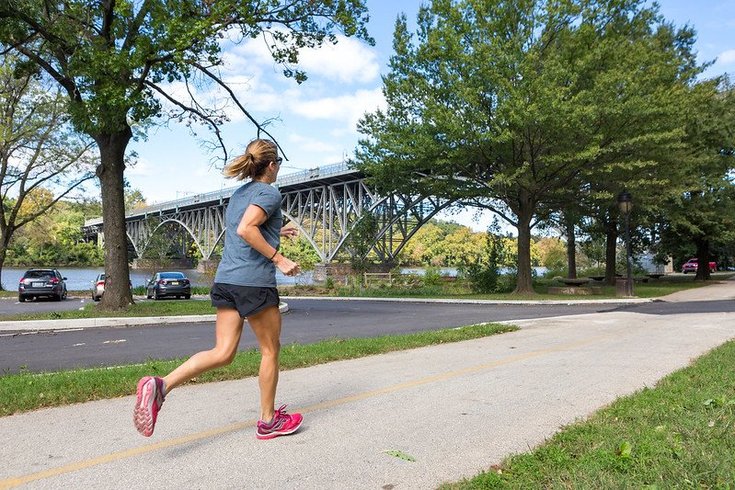
December 18, 2023
 Thom Carroll/for PhillyVoice
Thom Carroll/for PhillyVoice
To build and maintain a regular exercise routine, experts say small goals and accountability are key.
American health authorities have been preaching the same fitness guidelines for decades now: at least 150 minutes of moderately intense aerobic activity every week, plus strength training on two days. This recommendation is touted by the U.S. Department of Health and Human Services and the American College of Sports Medicine to reduce the risk of disease and maintain good bone, muscle and brain health.
But as those same authorities are quick to acknowledge, most people don't work out that much.
MORE: Exercise can improve metastatic breast cancer patients' quality of life, study finds
A 2020 survey from the Centers of Disease Control and Prevention found that only 24.2% of U.S. adults met the guidelines for both aerobic and strength-training activities. While about 22.7% achieved just the aerobic goals, nearly half (46.3%) achieved neither — and the numbers only got worse with age.
"Really, 150 minutes is a lot," Dr. John Vasudevan, a physician for University of Pennsylvania Athletics, said. "It's two and a half hours, and it's not just any activity. It seems very hard to achieve because a lot of the activity that we might count as exercise in the first place, like just walking to the store and so on, while still good, isn't quite hitting that number."
Vasudevan explained that "moderate" activity must pass what's called the talk test. If you're moving but can still talk and sing comfortably, you're engaging in a low-intensity workout. Moderate activity is achieved when talking and singing become harder; if you're pausing mid-sentence or struggling to harmonize at all, you've passed the talk test.
How can the average adult achieve regular exercise that meets these guidelines? Vasudevan and Damon Roxas, a master trainer at Fit Academy in Brewerytown, offered advice on making the commitment a little less daunting:
It's easy to blow off exercise when you only have vague plans to run in the park, but making an appointment with a trainer or signing up for a class or rec league can provide extra accountability.
"We're an appointment society," Roxas said. "If I get on somebody's calendar, they're going to be successful, because they're going to see it on the calendar just like they would for a meeting or a phone call. They're going to follow through."
Another way to think of it is to schedule fitness into your regular routine. For commuters, Vasudevan recommends walking briskly to the train or parking your car a little further from the office for an extra power walk.
Let's say you did start speed walking to work. Over time, you might transition to biking, but you're more likely to make that switch if it's gradual.
"The only way you can really get there is by starting very small and building up from there," Vasudevan said. "One is infinitely more than zero."
This can look like walking three blocks one day, with a goal of hitting four the next. Visualizing your accomplishments by writing them down or using a pedometer or smartwatch also can help with this progression, Vasudevan said.
Strength training often is associated with massive dumbbells, but our experts say that bodyweight exercises — like push-ups, squats, planks and lunges — are a better starting point. Doing regular body work can improve flexibility and agility over time, and it's easy to do at home. Roxas recommends knocking out four sets with 10-15 reps of air squats, push-ups and planks while watching TV.
Exercise doesn't require expensive equipment. Both experts recommend resistance bands, which can cost as little as $15-$30, to add extra heat to squats, crunches and curls.
"You can get them with different resistance, and a lot of times that's gonna be enough to, once you learn how to engage muscles with those resistance bands, hit most of the groups just while in your living room," Vasudevan said.
"Any solid trainer can kick your a** with some bands," Roxas added with a laugh.
Pushing too hard to achieve a fitness goal can result in injury that interferes with your new regimen and effectively knocks you back to square one. Vasudevan cautions patients to watch for warning signs, like small attacks of pain or a repeatedly rolled ankle, and check in with a doctor before they escalate.
Follow Kristin & PhillyVoice on Twitter: @kristin_hunt
| @thePhillyVoice
Like us on Facebook: PhillyVoice
Have a news tip? Let us know.